GrazingFutures Livestock Business Resilience — Case studies
Documenting some of the changes made by landholders is a component of the GrazingFutures Livestock Business Resilience program. The case studies below describe the outcomes of the changed practice from both business and environmental impact perspectives.
Collaborative decision-making process for improving landscape resilience
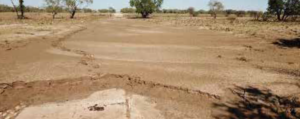 As a result of the 2019 floods across Western Queensland, vast amounts of topsoil were lost, watercourses scoured and undermined, widespread weed distribution and livestock losses. Part of the O’Brien’s Creek stock route (80km north-west of Winton) was prioritised for rehabilitation. Instead of using traditional structural solutions, this project used non-structural or ‘soft engineering’ solutions planned and tested with stakeholders. See how the project went: Collaborative decision-making process for improving landscape resilience (PDF, 599 KB).
As a result of the 2019 floods across Western Queensland, vast amounts of topsoil were lost, watercourses scoured and undermined, widespread weed distribution and livestock losses. Part of the O’Brien’s Creek stock route (80km north-west of Winton) was prioritised for rehabilitation. Instead of using traditional structural solutions, this project used non-structural or ‘soft engineering’ solutions planned and tested with stakeholders. See how the project went: Collaborative decision-making process for improving landscape resilience (PDF, 599 KB).
Taking control: Building sustainability and resilience at Francvillers, Cunnamulla, Queensland (Part 1)
 Don and Debbie Dunsdon put in spreader banks to slow the flow of high velocity runoff and increase water infiltration with their Southern Queensland Landscapes grant. This has led to a remarkable recovery of native groundcover and pastures, while also improving erosion and water quality. Read Don and Debbie’s story: Taking control: Building sustainability and resilience on Francvillers – Part 1 (PDF, 637 KB).
Don and Debbie Dunsdon put in spreader banks to slow the flow of high velocity runoff and increase water infiltration with their Southern Queensland Landscapes grant. This has led to a remarkable recovery of native groundcover and pastures, while also improving erosion and water quality. Read Don and Debbie’s story: Taking control: Building sustainability and resilience on Francvillers – Part 1 (PDF, 637 KB).
Goal setting is the key to intentional action at Aqualoo
 During the 2019-2020 drought at Aqualoo, Mitch and Danille Kosters managed first calf heifers with twice-weekly feeding and trade cattle on pellets and dry feed. It took them about 2 full days to feed approximately 500–600 adult equivalent of cattle distributed across the property. When the opportunity arose to get funding through a Drought Preparedness Grant, they where motivated to launch a fodder storage and containment feeding program. As a family business with small children, Mitch and Danille have always prioritised establishing infrastructure and processes to ensure maximum efficiency, safety and productivity. Read Mitch and Danille’s story: Goal setting is the key to intentional action Aqualoo (PDF, 455 KB).
During the 2019-2020 drought at Aqualoo, Mitch and Danille Kosters managed first calf heifers with twice-weekly feeding and trade cattle on pellets and dry feed. It took them about 2 full days to feed approximately 500–600 adult equivalent of cattle distributed across the property. When the opportunity arose to get funding through a Drought Preparedness Grant, they where motivated to launch a fodder storage and containment feeding program. As a family business with small children, Mitch and Danille have always prioritised establishing infrastructure and processes to ensure maximum efficiency, safety and productivity. Read Mitch and Danille’s story: Goal setting is the key to intentional action Aqualoo (PDF, 455 KB).
Water and wire—helping to regenerate Ashmount, Muckadilla, Queensland
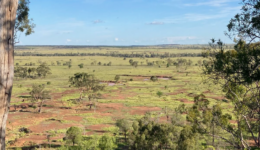 David and Meredith Barrett bought Ashmount in 2020 with a clear vision to restore the land. The property was suffering following long-term drought and overgrazing. With the help of Southern Queensland Landscapes, David and Meredith have put in approximately 13km of spreader banks and blocks in eroded gullies to slow the flow and encourage better water infiltration. They have also implemented a ‘Water and wire’ project across the property which includes 30km of poly pipe, 30 new troughs and internal electric fencing for 30 paddocks that are rotationally grazed. Read David and Meredith’s story: Water and wire—helping to regenerate Ashmount (PDF, 1 MB). Watch their story: Water and Wire: Helping to Regenerate ‘Ashmount’, Muckadilla Qld.
David and Meredith Barrett bought Ashmount in 2020 with a clear vision to restore the land. The property was suffering following long-term drought and overgrazing. With the help of Southern Queensland Landscapes, David and Meredith have put in approximately 13km of spreader banks and blocks in eroded gullies to slow the flow and encourage better water infiltration. They have also implemented a ‘Water and wire’ project across the property which includes 30km of poly pipe, 30 new troughs and internal electric fencing for 30 paddocks that are rotationally grazed. Read David and Meredith’s story: Water and wire—helping to regenerate Ashmount (PDF, 1 MB). Watch their story: Water and Wire: Helping to Regenerate ‘Ashmount’, Muckadilla Qld.
Good planning is a key part of ensuring your farm business is resilient during tough times

The following year after Kevin and Shelly Taylor purchased Ooralat, near Mt Surprise, Far North Queensland, it was drought declared and the importance of a good management strategy became clear. In this case study the Taylor’s share how they used Drought Preparedness Grants to install a hay farm, divide paddocks and increase number of water points to ensure they are prepared for the next drought. Through good grazing and breeder management the Taylors have improved their weaning rates and land condition. Read the Ooralat Case Study (PDF, 1MB).
Benefits of business planning
Steve and Gill Wittner have weathered severe climate events in their 10 years on Tranquility south of Monto, Queensland. In this case study, they share their journey to developing a business plan and goals, initially to access funding to be better prepared for future droughts. However, it also helped them ‘think much more about their business direction’ and is one that Steve ‘recommends to all graziers even if not apply for a grant’. Read the Benefits of business planning case study (PDF, 303 KB).
 Phosphorus supplementation at Watson River
Phosphorus supplementation at Watson River
This GrazingFutures project is assisting beef producers to identify phosphorus deficiencies, tailor supplement recipes and adopt practical feed delivery systems at the property and paddock level. In this case study, the Quartermaine family of Watson River, near Weipa in Far North Queensland, discuss the benefits they have seen since starting to feed phosphorus during the wet season, nearly a decade ago. Some of the benefits observed have included an increase in weaning rate by 11% and a decrease in breeder mortality by 3%. Read the Phosphorus supplementation at Watson River case study (PDF, 1.3 MB).
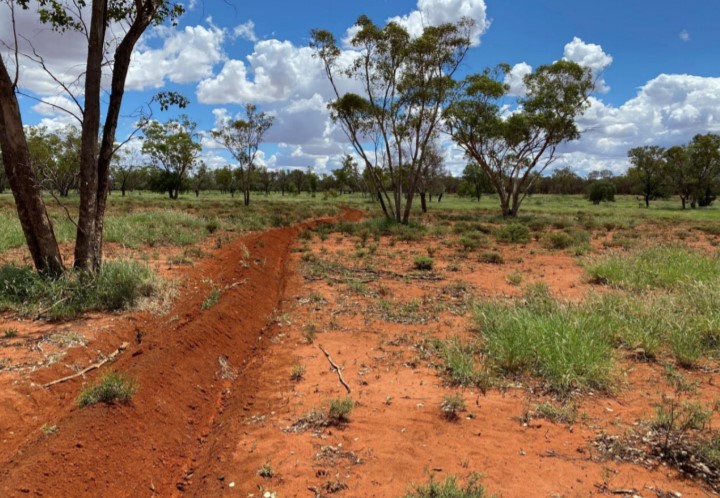 Spreader banks for water retention with Glenn Landsberg
Spreader banks for water retention with Glenn Landsberg
After attending a water ponding and spreader bank field day in Cunnamulla in August 2019, Glenn Landsberg of Sunset, Charleville, implemented five new spreader banks that were different in design to his usual practice. After good rain in early 2020, Glenn was able to compare the effect of the different spreader bank designs. In this GrazingFutures case study, Glenn shares what he has learnt, including a comparison of the different water spreader designs. Read the Spreader banks for water retention with Glenn Landsberg case study (PDF. 2.7 MB).
Eldorado Station — Prickly acacia treatment and operational changes
 “Prickly acacia is like cancer, you have to cut it out completely. If you just clear some of it, it will soon return.”
“Prickly acacia is like cancer, you have to cut it out completely. If you just clear some of it, it will soon return.”
David and Helen Ogg of Eldorado Station near Hughenden, have been treating prickly acacia on Eldorado for thirty years and continue to learn and improve techniques. During a field day that he attended in 2018, David learnt that the reason he wasn’t getting great results from the application of Graslan™ around areas that stock camp, is due to the high levels of urea (through urine) in the soil. Read more of David and Helen’s learnings and adaptations in their management techniques in this GrazingFutures case study: Eldorado Station – Prickly acacia treatment and operational changes (PDF, 500 KB).
Bendemeer — Prickly acacia treatment and wet season spelling
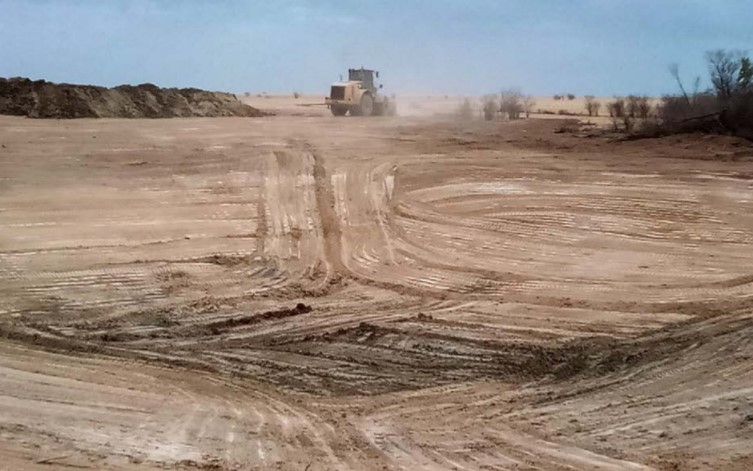 Climatic variability at Bendemeer has presented a number of challenges to the operation of a livestock business, including significant droughts and flooding rains resulting in significant losses of stock and top soil. The magnitude of soil disturbance that was observed during the 2019 floods of north west Queensland, meant that the native pasture species were largely drowned leaving the area prone to prickly acacia invasion. As a result, the owners of Bendemeer, Jeff and Debbie Nichols, were forced to remove a significant amount of prickly acacia from 10,000 acres of their prime grazing land. To ensure their efforts were not in vain, Jeff and Debbie have modified their land and herd management strategies to include a strict quarantining period when importing livestock and also to greatly lighten the stocking rate to ensure the country has the opportunity to recuperate from the extensive flood-induced erosion incurred in 2019. Read Jeff and Debbie’s story: Bendemeer – Prickly acacia treatment and wet season spelling (PDF, 500 KB).
Climatic variability at Bendemeer has presented a number of challenges to the operation of a livestock business, including significant droughts and flooding rains resulting in significant losses of stock and top soil. The magnitude of soil disturbance that was observed during the 2019 floods of north west Queensland, meant that the native pasture species were largely drowned leaving the area prone to prickly acacia invasion. As a result, the owners of Bendemeer, Jeff and Debbie Nichols, were forced to remove a significant amount of prickly acacia from 10,000 acres of their prime grazing land. To ensure their efforts were not in vain, Jeff and Debbie have modified their land and herd management strategies to include a strict quarantining period when importing livestock and also to greatly lighten the stocking rate to ensure the country has the opportunity to recuperate from the extensive flood-induced erosion incurred in 2019. Read Jeff and Debbie’s story: Bendemeer – Prickly acacia treatment and wet season spelling (PDF, 500 KB).
Yaralla and Gamarren — NIRS and phosphorus testing, a quality result
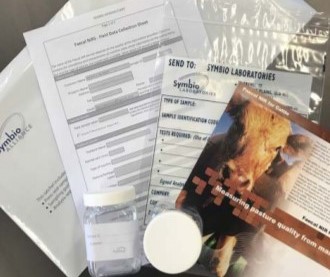 After experiencing their fifth failed wet season and attending a Mulga and Nutrition Workshop in 2017, Ben McKenzie and family of Yaralla and Gamarren near Cunnamulla, decided to invest in Faecal Near Infrared Spectroscopy (FNIRS) and phosphorus deficiency testing of his herd. Ben believes in feeding for a purpose in order to see a return on investment. In this case, the aim was to maintain or decrease loss of body condition through the peak nutritional demand (early lactation) and therefore improve conceptions the following year. The FNIRS and phosphorus testing helped Ben refine and target the phosphorus deficiency and use the high-quality feed available with confidence. To read more about how Ben used the results of the diet quality tests to maximise herd productivity with economic efficiency, click here: NIRS and Phosphorus test – a quality result (PDF, 700 KB).
After experiencing their fifth failed wet season and attending a Mulga and Nutrition Workshop in 2017, Ben McKenzie and family of Yaralla and Gamarren near Cunnamulla, decided to invest in Faecal Near Infrared Spectroscopy (FNIRS) and phosphorus deficiency testing of his herd. Ben believes in feeding for a purpose in order to see a return on investment. In this case, the aim was to maintain or decrease loss of body condition through the peak nutritional demand (early lactation) and therefore improve conceptions the following year. The FNIRS and phosphorus testing helped Ben refine and target the phosphorus deficiency and use the high-quality feed available with confidence. To read more about how Ben used the results of the diet quality tests to maximise herd productivity with economic efficiency, click here: NIRS and Phosphorus test – a quality result (PDF, 700 KB).
Amber Station — Phosphorus supplementation and property development
 In this case study, Dan and Georgia Slaney of Amber Station share their management plans, including an economic analysis of the expected benefits supplementing breeders with phosphorus and further infrastructure development of the station, will provide. Dan and Georgia also describe the changes they saw in the condition of the cattle in their care once phosphorus supplementation had been provided. Read this excellent GrazingFutures and E-Beef Case Study: Amber Station — Phosphorus and property development (PDF, 1 MB).
In this case study, Dan and Georgia Slaney of Amber Station share their management plans, including an economic analysis of the expected benefits supplementing breeders with phosphorus and further infrastructure development of the station, will provide. Dan and Georgia also describe the changes they saw in the condition of the cattle in their care once phosphorus supplementation had been provided. Read this excellent GrazingFutures and E-Beef Case Study: Amber Station — Phosphorus and property development (PDF, 1 MB).
Lara Downs
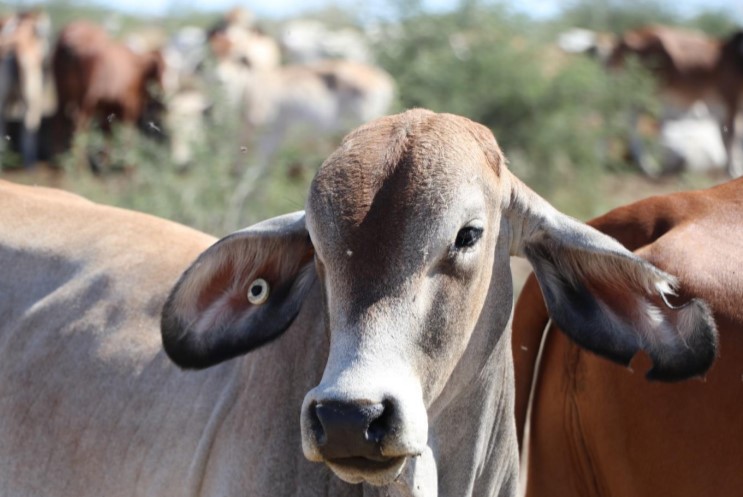 Colin Burnett of Lara Downs, north of Julia Creek, attended a GrazingFutures-NextGen Nutrition and Grazing workshop in February 2017. He subsequently joined the Department of Agriculture and Fisheries led SavannaPlan-BeefSense NextGen mentoring program which focused on improving industry knowledge and confidence in managing grass, people and finances. These experiences led him to successfully apply for, and complete, a Nuffield Scholarship (How the north west Queensland beef industry can survive and prosper (PDF, 1.2 MB)) in 2019.
Colin Burnett of Lara Downs, north of Julia Creek, attended a GrazingFutures-NextGen Nutrition and Grazing workshop in February 2017. He subsequently joined the Department of Agriculture and Fisheries led SavannaPlan-BeefSense NextGen mentoring program which focused on improving industry knowledge and confidence in managing grass, people and finances. These experiences led him to successfully apply for, and complete, a Nuffield Scholarship (How the north west Queensland beef industry can survive and prosper (PDF, 1.2 MB)) in 2019.
In June 2019, Colin sat down with Cloncurry Beef Extension Officer, Lindsey Perry, to discuss the operation and thinking at Lara Downs. The Nuffield experience, particularly the New Zealand leg, impressed on Colin the importance of maintaining land, herd, people and finance banks. In the Lara Downs Station Case Study (PDF, 1.5 MB) Colin provides notes about each of these aspects of a grazing enterprise.
Mulga — your stock, your supplement — with Clynt Johnstone
 Clynt Johnstone attended the Mulga and Nutrition Workshop in Cooladdi in 2017. Clynt changed his supplement ration to improve cost effectiveness and productivity through growth rates in weaners and reproduction rates in breeders using the knowledge and networks he gained from attending. He sees the importance of understanding the nutritional requirements of his stock, matching it with the feed available and targeting nutritional deficits to maximise production. Read more about what Clynt learnt and the changes he made in this case study (PDF, 560KB).
Clynt Johnstone attended the Mulga and Nutrition Workshop in Cooladdi in 2017. Clynt changed his supplement ration to improve cost effectiveness and productivity through growth rates in weaners and reproduction rates in breeders using the knowledge and networks he gained from attending. He sees the importance of understanding the nutritional requirements of his stock, matching it with the feed available and targeting nutritional deficits to maximise production. Read more about what Clynt learnt and the changes he made in this case study (PDF, 560KB).
“Hope is not a plan” — with Russell and Donna Lethbridge
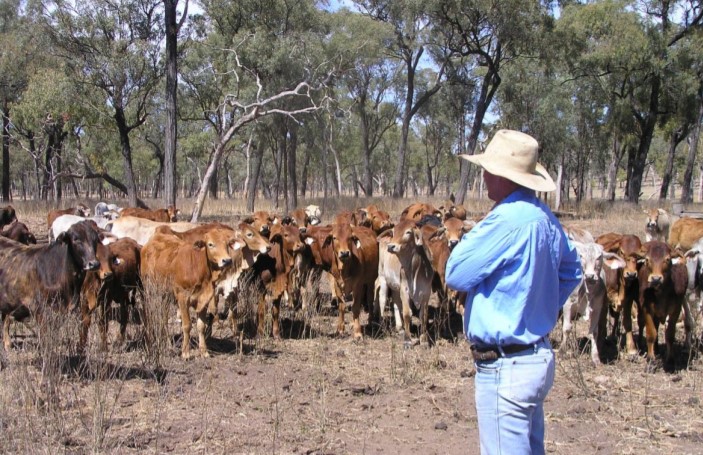 Russell and Donna Lethbridge of Werrington Station have shown that operating a grazing system that mitigates the risk of climate variability does not need to be complex, however it does need to have room for “buffers”. To create this flexibility within his grazing business, Russell has made a number of changes over the years to his management practices that has not only increased the business’ productivity, but also decreased the breeder mortality rate from 5% to 0.5%. To read more about the management strategies used to achieve this result, download the Werrington Station case study (PDF, 2 MB).
Russell and Donna Lethbridge of Werrington Station have shown that operating a grazing system that mitigates the risk of climate variability does not need to be complex, however it does need to have room for “buffers”. To create this flexibility within his grazing business, Russell has made a number of changes over the years to his management practices that has not only increased the business’ productivity, but also decreased the breeder mortality rate from 5% to 0.5%. To read more about the management strategies used to achieve this result, download the Werrington Station case study (PDF, 2 MB).
Managing seasonal variation in north-west Queensland with Lindsay and Sally Allan
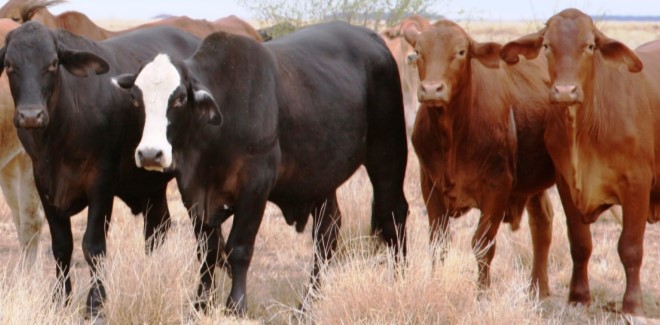 In this GrazingFutures case study, Lindsay and Sally Allan from Longford and Glenholme near McKinlay, share what they have learnt from many years of managing a beef business in the variable climate of north-west Queensland. During dry years, Lindsay and Sally recommend maintaining a conservative stocking rate, conducting forage budgets early and acting upon the insights gained, wean early, cull older animals and retain younger stock. Learn more about Lindsay and Sally’s business, including how infrastructure development is prioritised, breeding management and nutrition management: Managing seasonal variation in north-west Queensland with Lindsay and Sally Allan (PDF, 1 MB).
In this GrazingFutures case study, Lindsay and Sally Allan from Longford and Glenholme near McKinlay, share what they have learnt from many years of managing a beef business in the variable climate of north-west Queensland. During dry years, Lindsay and Sally recommend maintaining a conservative stocking rate, conducting forage budgets early and acting upon the insights gained, wean early, cull older animals and retain younger stock. Learn more about Lindsay and Sally’s business, including how infrastructure development is prioritised, breeding management and nutrition management: Managing seasonal variation in north-west Queensland with Lindsay and Sally Allan (PDF, 1 MB).
Productivity and profitability gains through efficient herd management with Glen and Cheryl Connolly of Blanncourt Station
 In the Georgetown region of the Queensland Gulf, Glen and Cheryl Connolly are advocates of wet season spelling. Since purchasing Blanncourt (a breeding enterprise of 18,739 ha) 20 years ago, the Connolly family have improved both productivity and profitability by implementing lighter stocking rates, wet season spelling, feeding and/or supplementation programs, cross breeding and pasture improvement.
In the Georgetown region of the Queensland Gulf, Glen and Cheryl Connolly are advocates of wet season spelling. Since purchasing Blanncourt (a breeding enterprise of 18,739 ha) 20 years ago, the Connolly family have improved both productivity and profitability by implementing lighter stocking rates, wet season spelling, feeding and/or supplementation programs, cross breeding and pasture improvement.
The Connelly’s have a number of property management principles that they implement, with a major management tool being wet season spelling. Effective spelling practices enable the Connelly’s to use spelled country for cattle with the highest nutritional requirements. Weaner paddocks are always spelled every wet season to provide fresh paddocks for newly weaned calves. Regular spelled paddocks are prioritised for wet cows with a branded calf.
To read more about Blanncourt, you have the option of reading a short summary: Blanncourt Station — productivity and profitability gains through efficient herd management (PDF, 500 KB), or, the original version featuring the whole of business case study and helpful rules of thumb: Case study – Tackling the tough years (PDF, 1.5 MB).